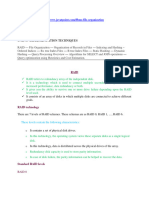0% found this document useful (0 votes)
157 views19 pagesUnit 3 - BlockChain
The document provides an overview of blockchain technology and cryptocurrency, highlighting key concepts such as decentralization, distributed ledgers, cryptography, and consensus mechanisms. It explains the workings of cryptocurrencies, their wallets, and the role of miners, while also discussing the applications and challenges of distributed ledger technology. Additionally, it covers cryptographic techniques used to secure transactions and ensure data integrity within the blockchain framework.
Uploaded by
timanshutomer25Copyright
© © All Rights Reserved
We take content rights seriously. If you suspect this is your content, claim it here.
Available Formats
Download as PDF, TXT or read online on Scribd
0% found this document useful (0 votes)
157 views19 pagesUnit 3 - BlockChain
The document provides an overview of blockchain technology and cryptocurrency, highlighting key concepts such as decentralization, distributed ledgers, cryptography, and consensus mechanisms. It explains the workings of cryptocurrencies, their wallets, and the role of miners, while also discussing the applications and challenges of distributed ledger technology. Additionally, it covers cryptographic techniques used to secure transactions and ensure data integrity within the blockchain framework.
Uploaded by
timanshutomer25Copyright
© © All Rights Reserved
We take content rights seriously. If you suspect this is your content, claim it here.
Available Formats
Download as PDF, TXT or read online on Scribd
/ 19

























































































